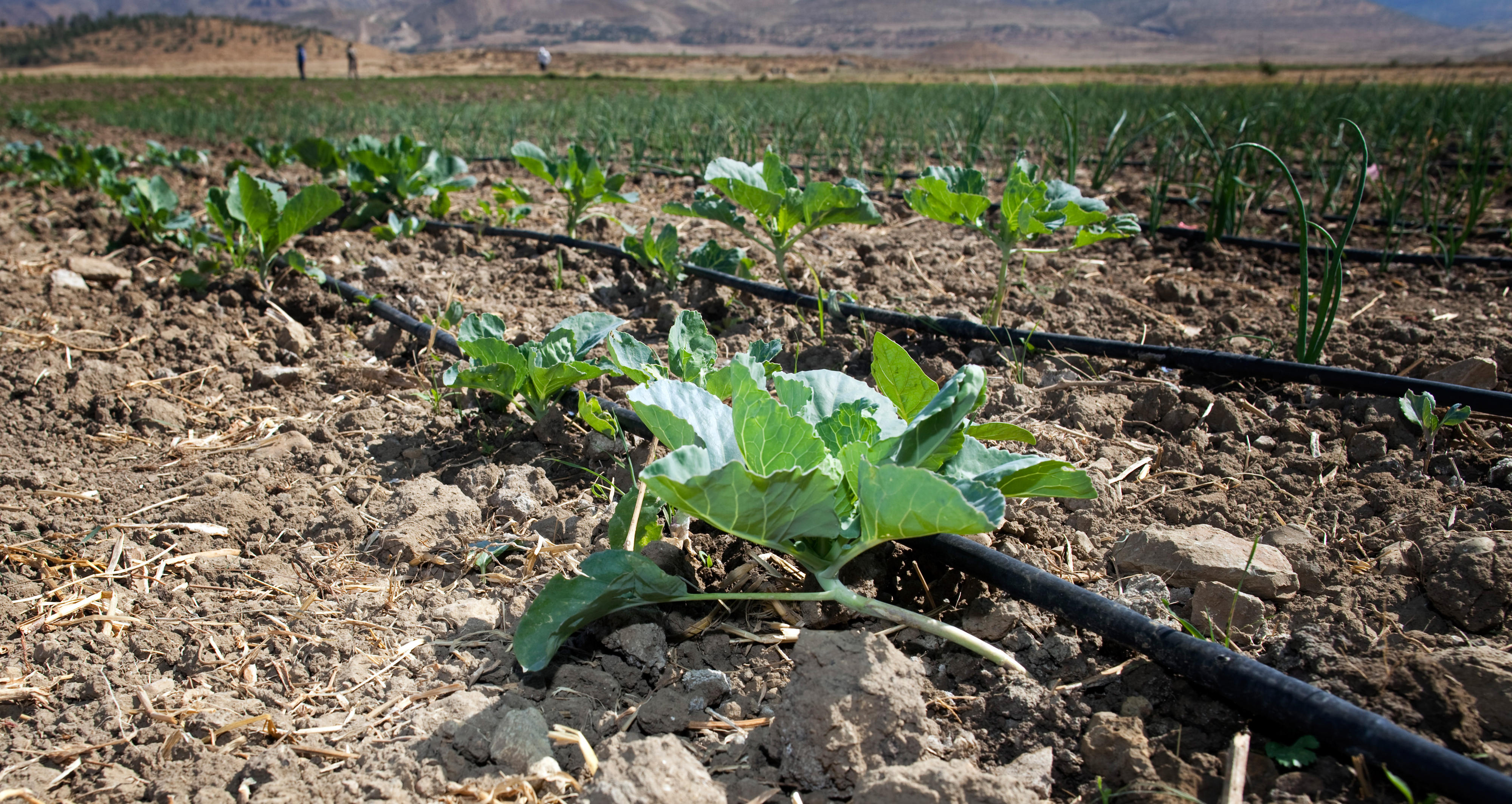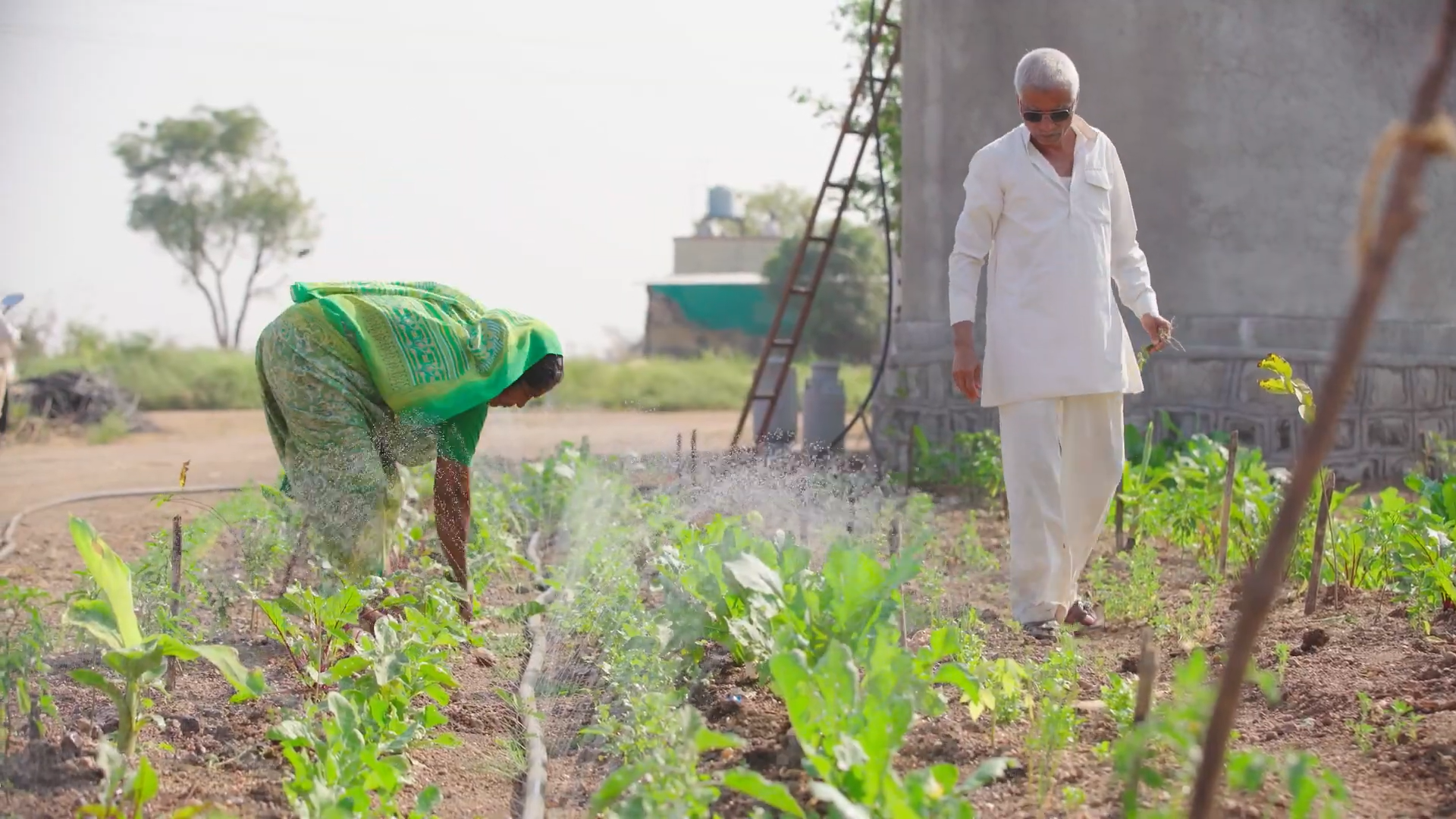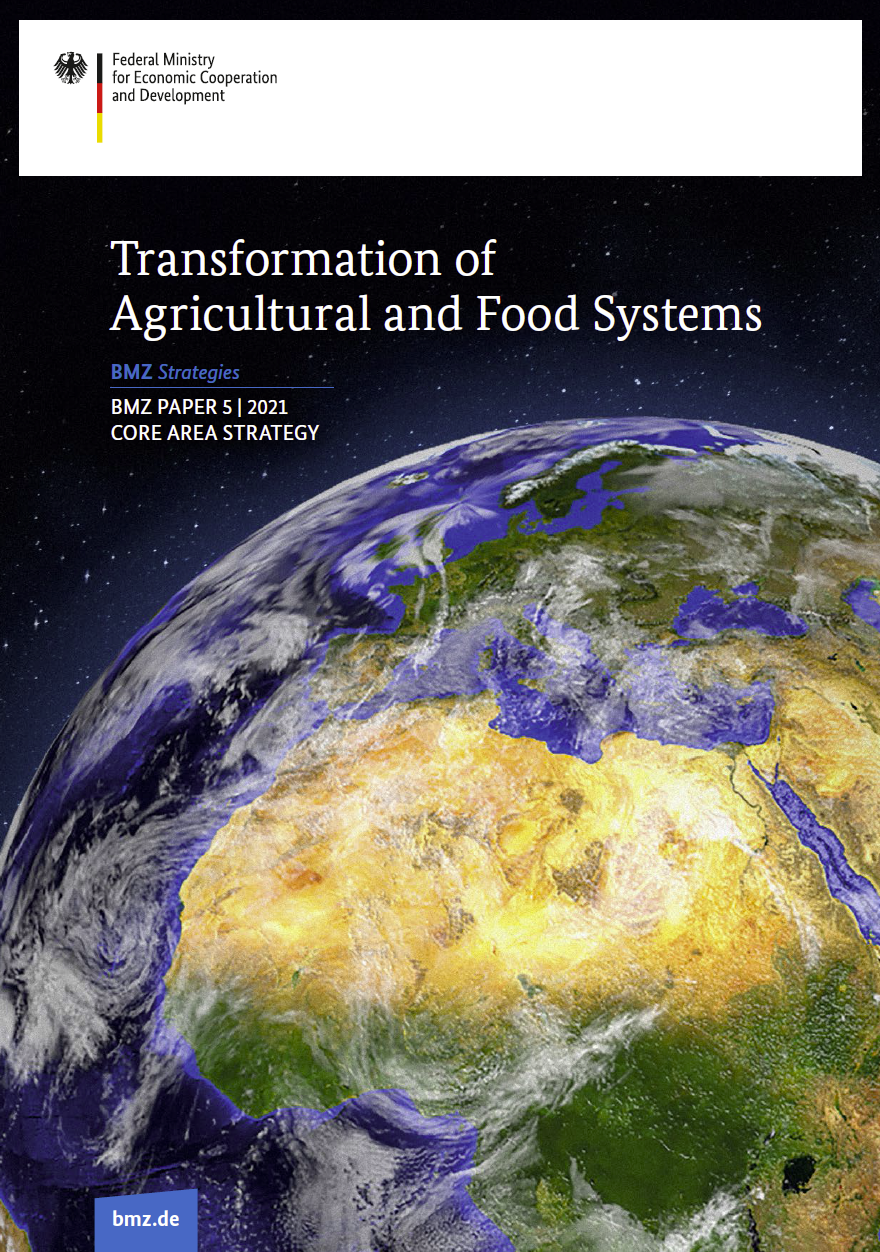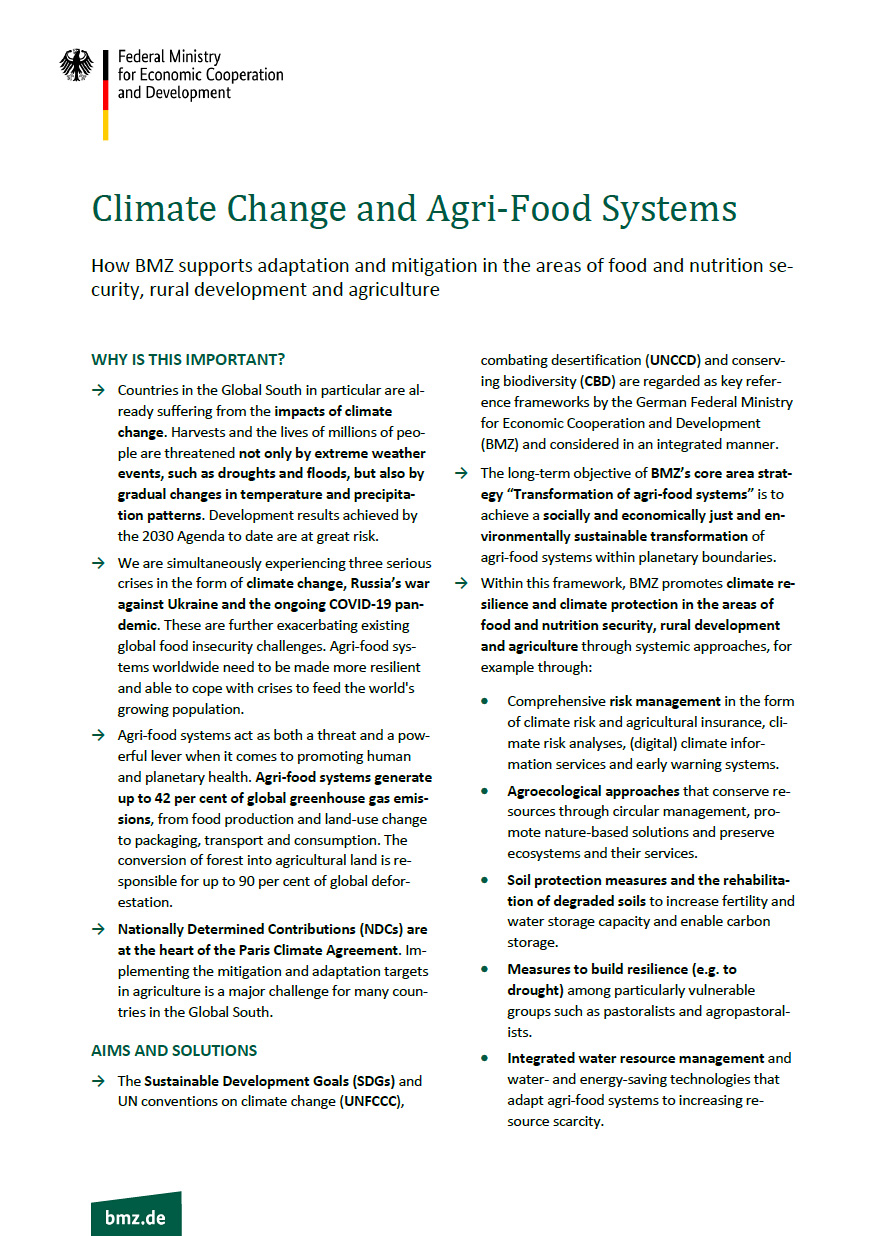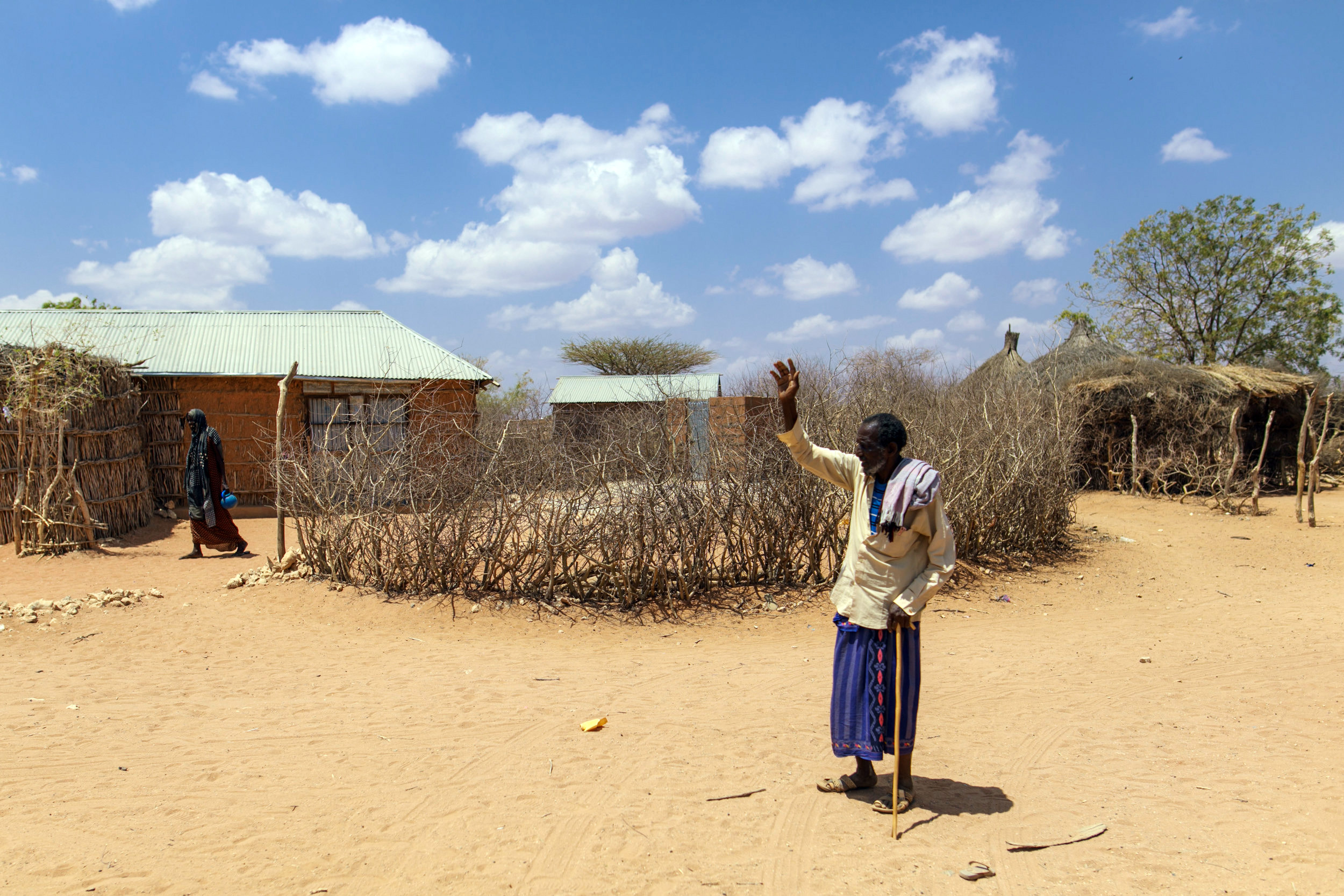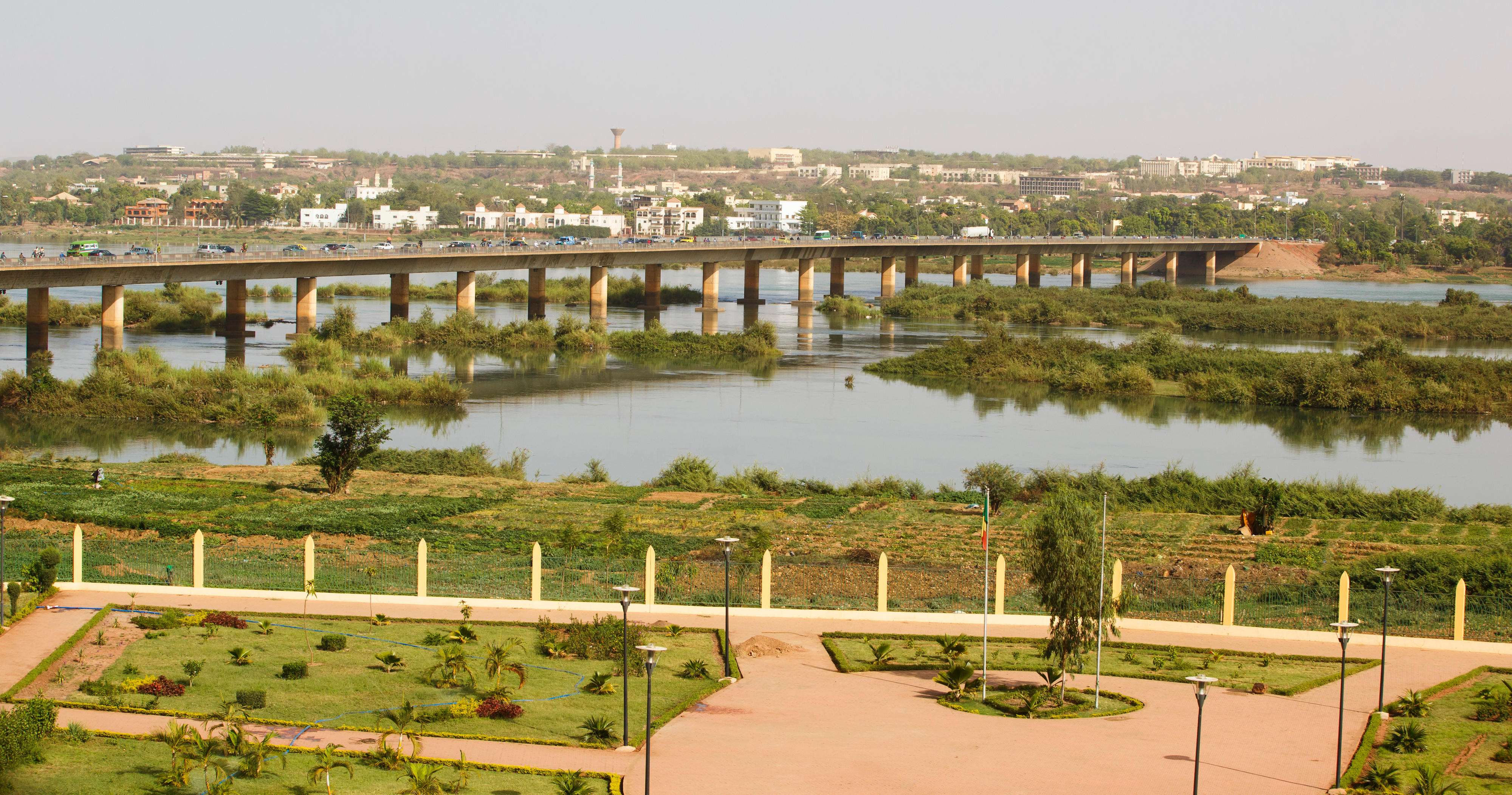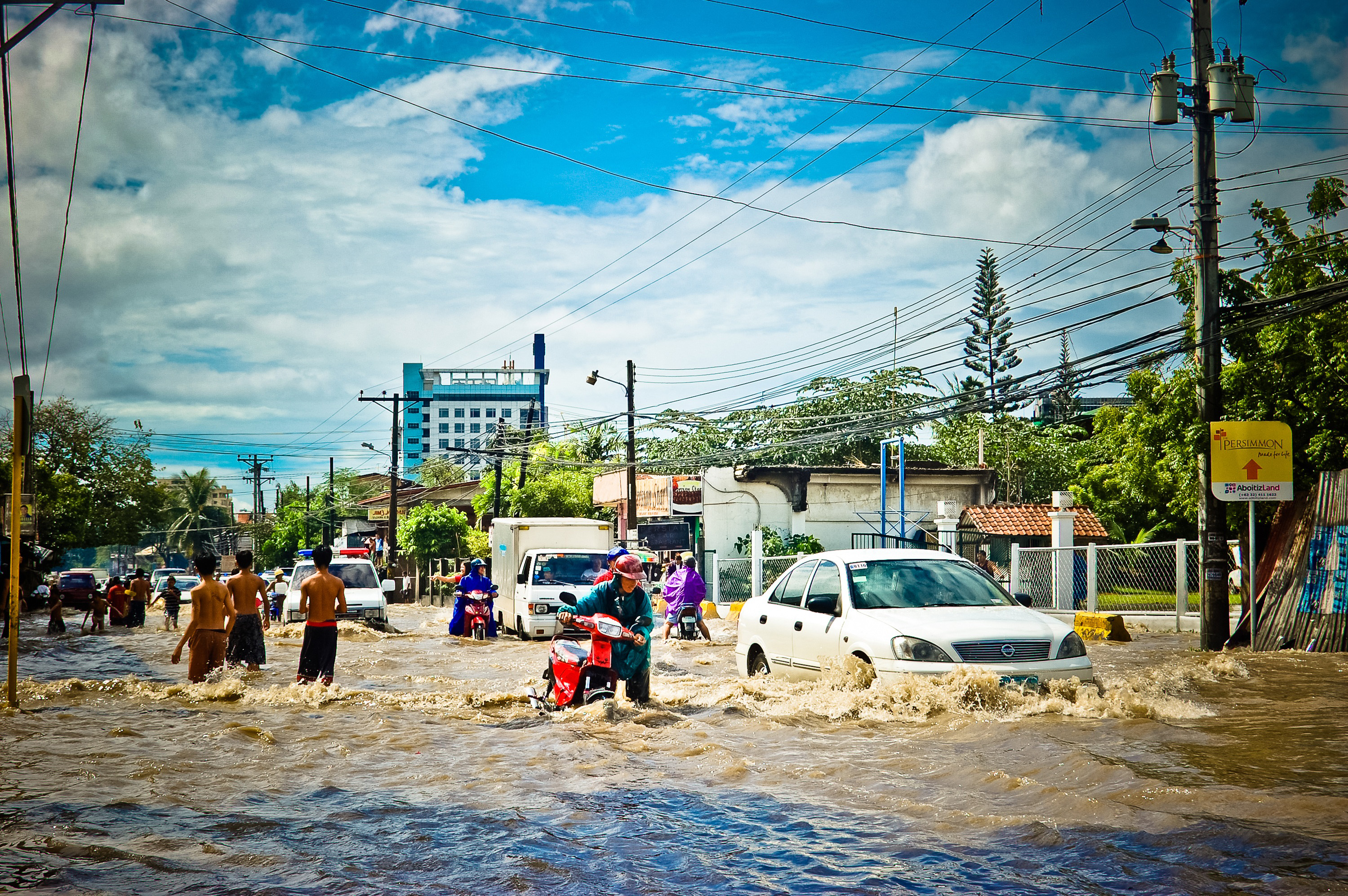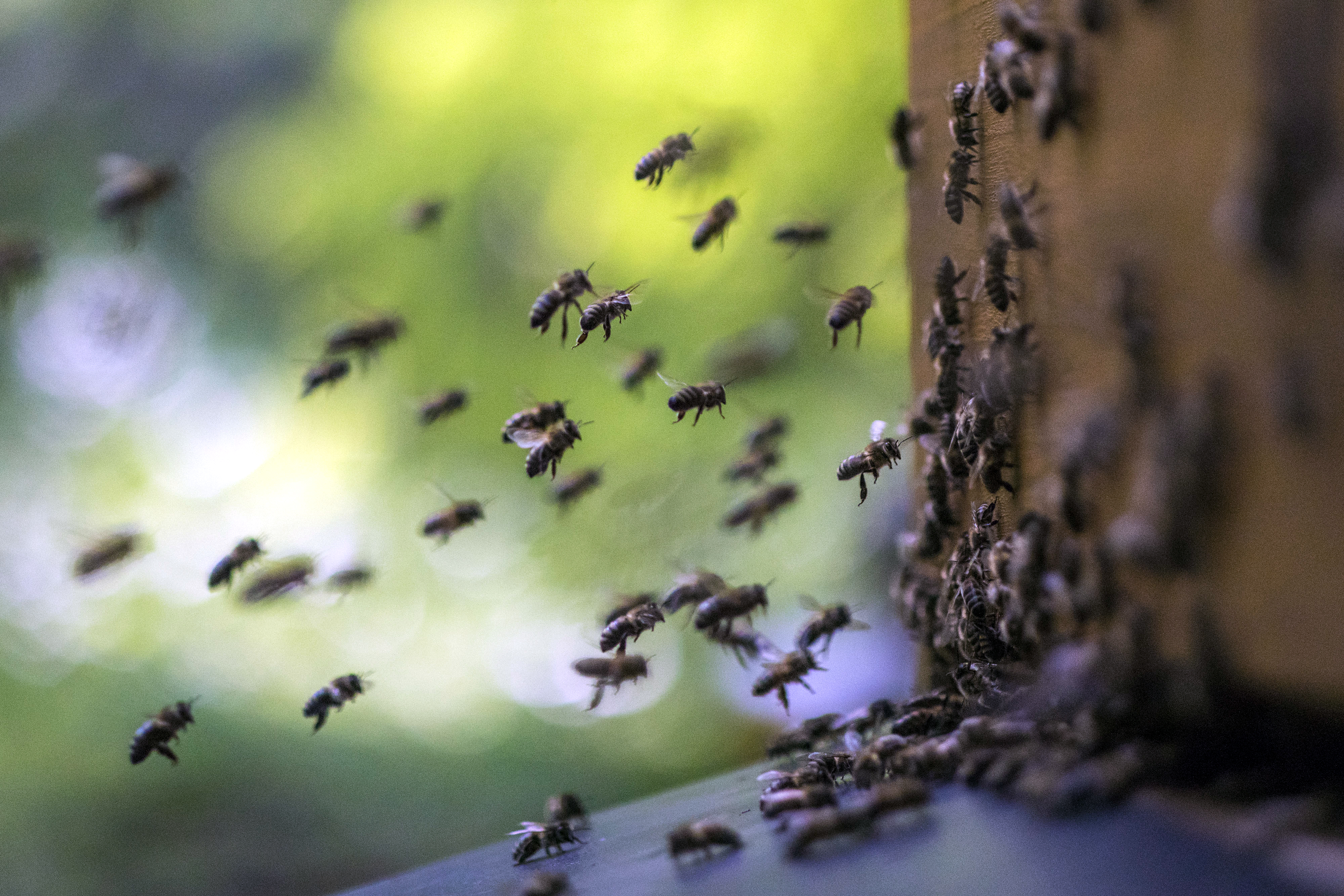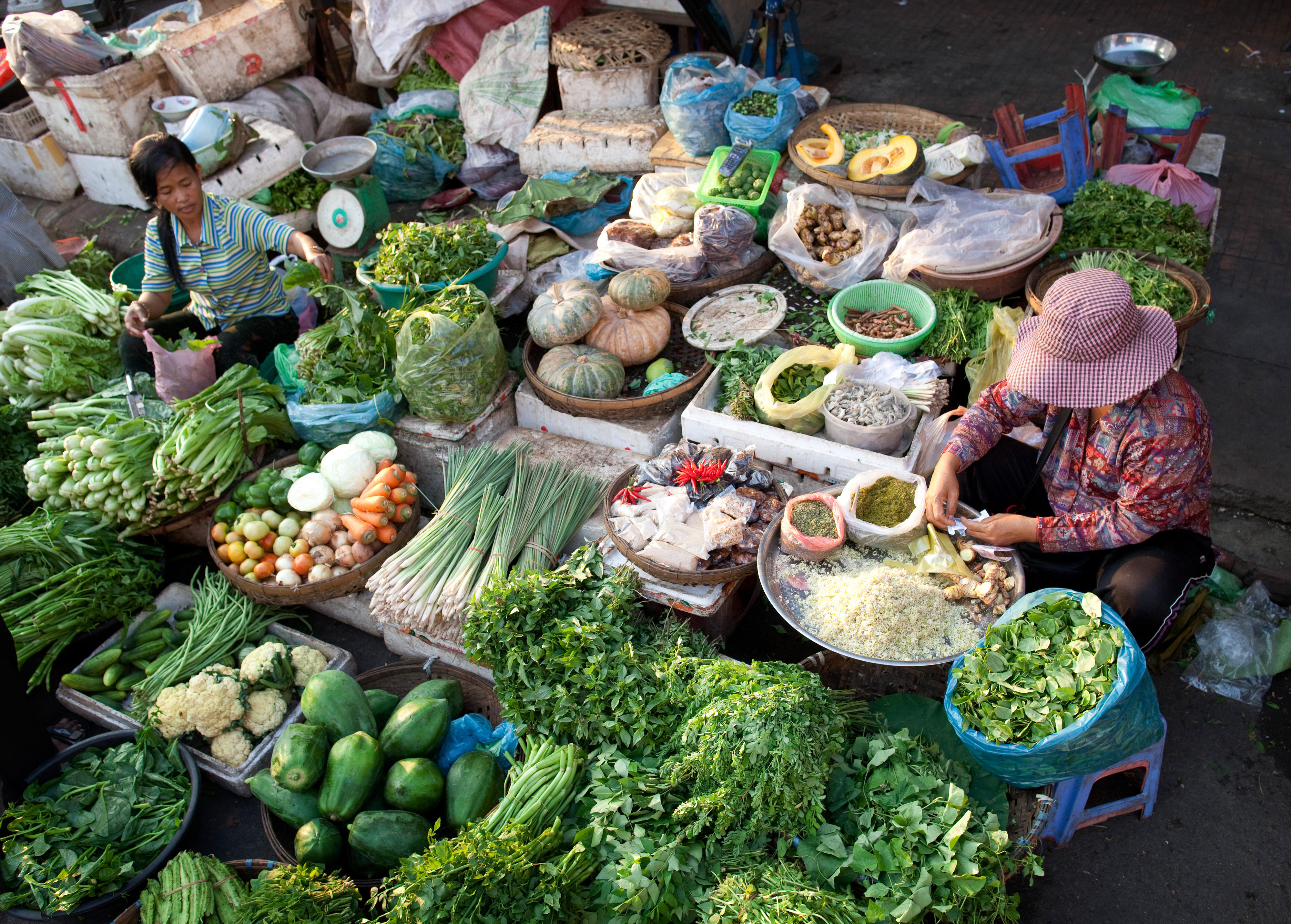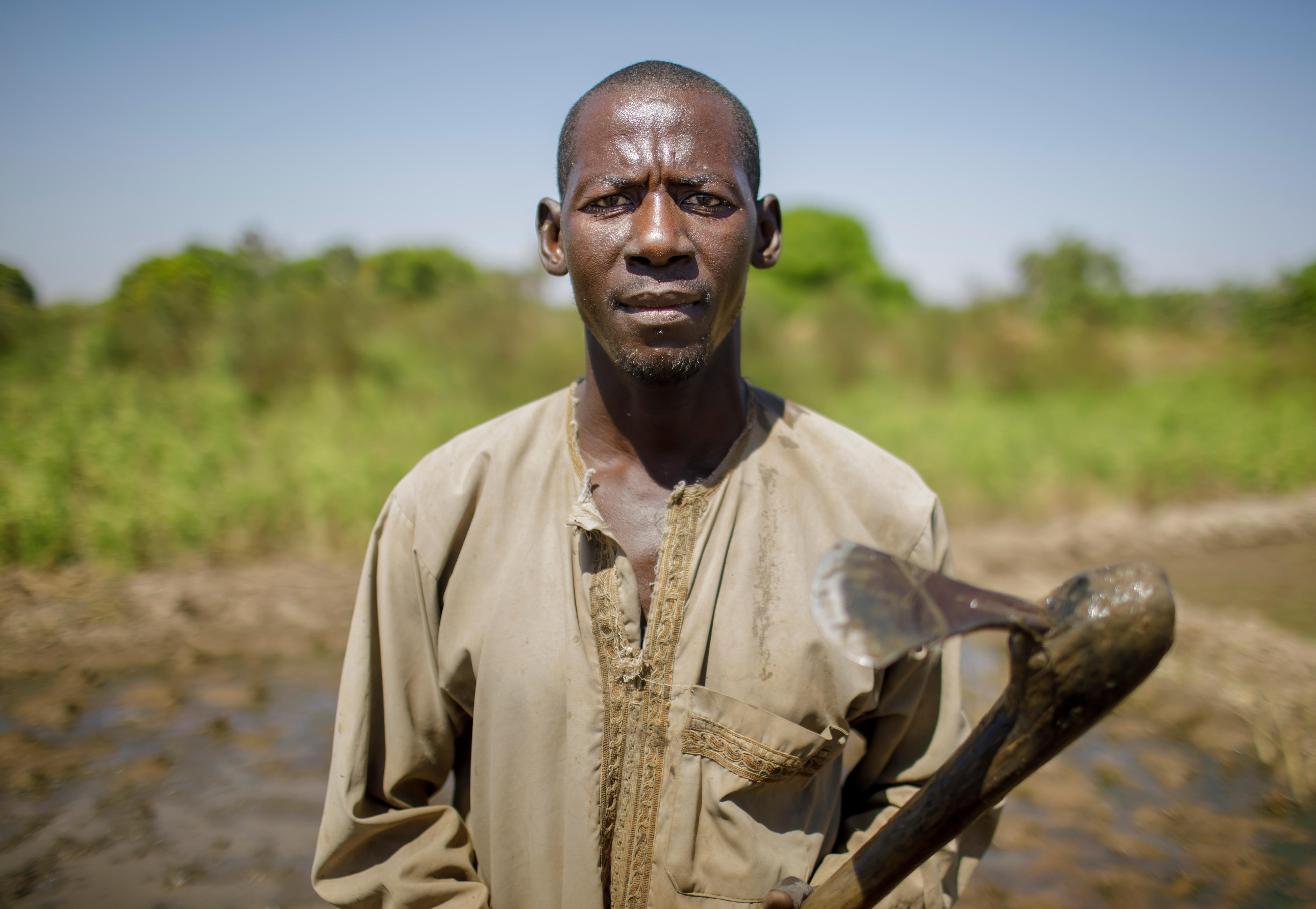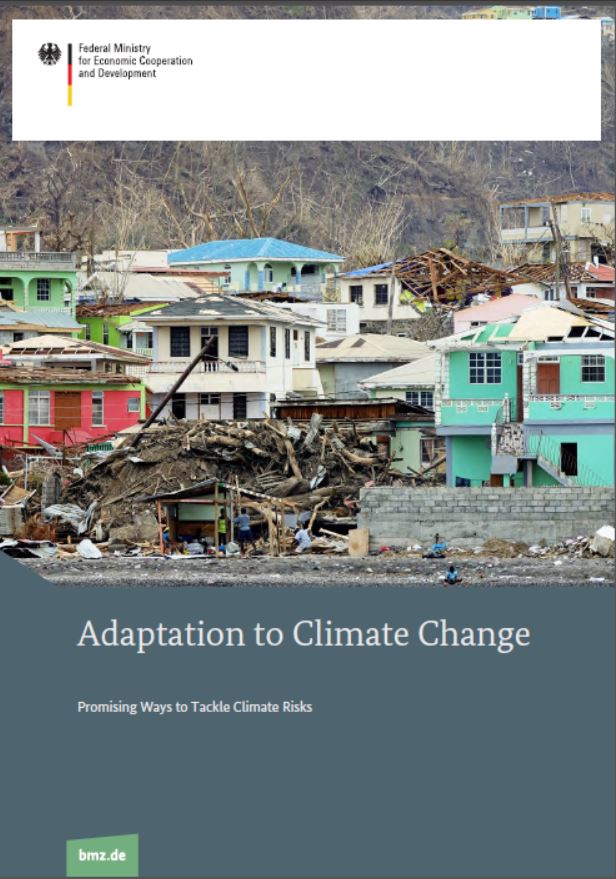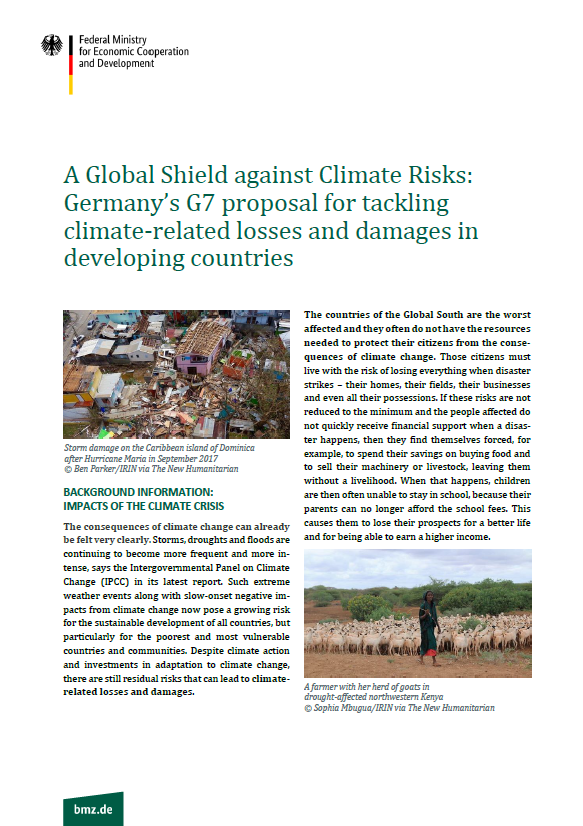Drip irrigation on a field in Ethiopia
Copyright© Thomas Köhler/photothek.net
Climate change and development Agriculture and climate
The impacts of climate change are felt most severely in the countries of the Global South. Indigenous peoples and small-scale farming families whose livelihoods directly depend on natural resources are especially affected. In Africa, more than half the workforce is employed in agriculture, mostly as smallholder farmers. Rising average temperatures, unpredictable rainy seasons and extreme weather events put agricultural production, and therefore livelihoods, at risk.
In combination with substantial food and energy price fluctuations and conflicts, which are exacerbated by climate change, the impacts are particularly severe for people who are already living in poverty. This situation has worsened as a result of the ongoing coronavirus pandemic and Russia’s war against Ukraine. In 2022, on average 735 million of the world’s people were hungry – 122 million more than in 2019.
Agricultural and food systems have a key role in play in coping with the climate crisis. At present, farming and food systems – from land-use change to food production, packaging, transport and consumption – are the source of more than 40 per cent of global greenhouse gas emissions. The conversion of forests and wetlands into farmland, meat production, excessive use of mineral fertilisers, and food losses and food waste bear much of the responsibility here, but changing dietary habits and growing demand for products such as palm oil, soy and beef, particularly in countries of the Global North, also play a role.
Low-carbon, resilient agricultural and food systems are required
It is possible to provide a secure and sustainable supply of healthy food for a global population of around 10 billion by 2050. However, this will require a radical transformation of land use, production processes and consumer behaviour. Our agricultural and food systems must become low-carbon and climate-resilient.
Protecting the climate by avoiding greenhouse gas emissions is a key element of this transformation. In parallel, effective measures are required to assist small-scale farms to adapt better to the new climatic conditions and boost their resilience to climate change impacts. Dietary habits and consumer behaviour must also change at the same time, and as swiftly as possible.
A diverse range of strategies, innovations and technologies that contribute to climate change adaptation and mitigation already exist. Many climate-relevant measures in agriculture, e.g. in sustainable soil management and water resources management, forest conservation and agroforestry, also have positive impacts on the environment and health.
Biomass and soils store carbon and thus contribute to climate change mitigation. Healthy agroecosystems are more resilient to climate change and enable productivity increases to be achieved, thus boosting food security. These measures must now be adapted to local sites and conditions and implemented as swiftly as possible.
The foundation of German development cooperation
The long-term aim of the “BMZ Core Area Strategy: Sustainable Agri-Food Systems” is the equitable transformation of agricultural and food systems worldwide across all the dimensions of sustainability: social, economic and environmental.
In this framework, the BMZ promotes climate resilience and climate change mitigation in the context of food security, rural development and agriculture. Here, it is important to balance the diverse approaches in order to take competing interests into account and avoid or mitigate conflicts of interest between the conservation and use of natural resources.
Partner countries are supported through a variety of measures:
- Agroecological strategies make sparing use of resources and conserve ecosystems and biodiversity.
- Soil conservation and the rehabilitation of degraded soils increase soil fertility and water retention capacities and facilitate carbon storage.
- Integrated water resources management, adapted irrigation infrastructure and water- and energy-saving technologies are essential in adapting agricultural and energy systems to growing resource scarcity.
- Comprehensive risk management – via agricultural insurance schemes, digital climate information services and early warning systems – builds smallholders’ capacities to cope with climate risks.
- Innovations along agricultural value chains help to reduce emissions and food losses. The promotion of sustainability standards for deforestation-free, low-carbon supply chains plays an important role in climate change mitigation.
Germany’s multilateral engagement
Integrating agriculture into international climate negotiations
At the 2017 Climate Change Conference in Bonn (External link), the close connection between agriculture and the climate was recognised by the international community. Since then, Germany has been involved, inter alia through the mandate of the Koronivia Joint Work on Agriculture (External link) (KJWA), in workshops and expert meetings aimed at identifying solutions for climate-resilient, low-carbon agriculture.
At the Climate Change Conference (COP27) in Sharm El-Sheikh, Egypt, in November 2022, the parties to the UNFCCC will decide on the continuation of engagement in this area.
Building agriculture and food systems into national climate planning
The Nationally Determined Contributions (NDCs) are the centrepiece of the Paris Agreement. For many countries of the Global South, however, formulating and implementing these NDCs poses a major challenge. The BMZ supports its partner countries’ efforts to integrate mitigation and adaptation targets for agricultural and food systems into their NDCs as one of their objectives and implement appropriate activities.
Supporting smallholder farmers
Climate change creates existential challenges for small-scale farming operations in particular. The Federal Ministry for Economic Cooperation and Development (BMZ) is providing 33 million euros in funding for the Adaptation for Smallholder Agriculture Programme (ASAP) established by the International Fund for Agricultural Development (IFAD).
Together with other donors, the BMZ is thus helping to build the resilience of around eight million smallholders in more than 40 countries worldwide.
Boosting climate resilience through innovation
The BMZ participates in the funding of international agricultural research and provided 20 million euros in funding for the 17 international agricultural research centres in 2019; its contribution rose to 35 million euros in 2020. The research centres develop and disseminate innovations which increase smallholders’ resilience to climate change impacts and help to build more sustainable food systems.
Promoting deforestation-free supply chains and sustainable consumption patterns
Around 90 per cent of deforestation can be attributed to the expansion of agriculture. The BMZ is therefore assisting its partner countries, companies and smallholders to develop deforestation-free supply chains for agricultural commodities such as soya, palm oil, cocoa and natural rubber. The BMZ is also advocating for an ambitious EU regulation on deforestation-free supply chains so that consumers in the EU can be certain that they are not contributing to deforestation through their consumption of agricultural commodities.
Protecting against climate risks and harvest losses
African countries are especially at risk from droughts, which are likely to occur more frequently as a result of climate change. Within the framework of the InsuResilience Global Partnership, Germany therefore supports the expansion of climate risk insurance in the agricultural sector, inter alia via the African Risk Capacity (ARC) schemes.
More than 30 African countries have already joined the ARC. As a result, 72 million people have benefited from insurance against drought and other climate risks.
As at: 12/10/2022
